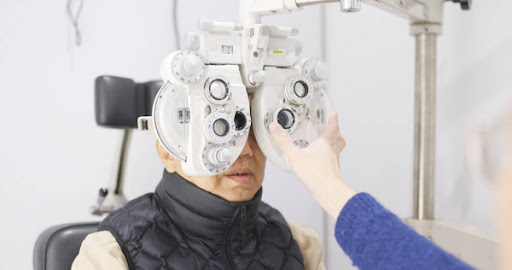What Causes Epiretinal Membranes (ERMs) and Macula Pucker?
The eye is filled with a gel-like substance known as vitreous fluid. With age, the vitreous fluid shrinks and pulls away slightly from the retina. It is a common process and with the pulling away of the vitreous fluid from the retina, a healing process to the damaged area is induced.
The healing process forms ERMs which allows for the vitreous fluid to attach on the surface of the retina. Usually, ERMs form without having any effect on the central vision, however when ERMs form over the macula, macula pucker occurs and is the cause for blurry and distorted vision.
What are the Symptoms of Macula Pucker?
The symptoms of macula pucker may vary depending on the placement and size of ERMs. Symptoms of macula pucker include:
-
Vision loss which can range from none to severe
-
Blind spots in the field of vision
-
Gray area in the field of vision
-
Blurred out and distorted vision
-
Straight lines appear wavy
-
Having difficulties reading, seeing fine details, driving, etc.
-
Presence of floaters
-
Experiencing frequent flashes
If you are experiencing any of the symptoms above, consult an ophthalmologist to diagnose and treat the condition immediately.
Age is the most common risk factor for macular pucker since the vitreous fluid naturally shrinks with age. Those who have had or have eye problems may also be at risk of macular pucker. Eye problems such as:
-
Swelling of the eye
-
Problems of the blood vessels found in the retina
-
Retinal detachment in which the vitreous fluid pulls away from the retina
-
Retinal tears
-
Previous surgery
-
Injuries of the eye
Diagnosing Macular Pucker
Macular pucker is usually diagnosed during regular eye examinations. Your ophthalmologist will initially administer eye drops to dilate your pupil which then allows for a clearer observation of the inside of the eye using a special lens. An Optical Coherence Tomography (OCT) or an ocular ultrasound will be used to observe the retina at a microscopic level. An OCT also allows the ophthalmologist to take photographs of the retina and identify the presence of ERMs as well as the position of the ERMs.
Treating Macular Pucker
Macular pucker usually does not require treatment especially if the symptoms are mild and does not affect your vision severely. In some cases, macular pucker can also clear up when the ERMs separate from the retina. However, if a patient is diagnosed with a severe case of macula pucker where the patient’s vision is drastically distorted, a vitrectomy will be prescribed.
A vitrectomy is a form of surgery that involves the vitreous fluid in the eye being removed and is to be replaced with a bubble of gas, oil, or air to push the retina back in its place. While gas and air bubbles get reabsorbed by the body, an oil bubble will have to be removed after a few months.
Importance and Awareness of Regular Eye Examinations at Eyecentric
Our highly skilled set of ophthalmologists and eye surgeons at Subang Jaya Medical Centre’s (SJMC) specialist eye centre – Eyecentric, ensures each patient is diagnosed and treated using a holistic approach.
We at Eyecentric stress on the importance of regular eye examinations as our top eye specialists have the capability to identify eye conditions before further damage is caused. Be proactive in protecting your vision.
Meet our Specialist
Dr Ronald Arun Das
Designation
Consultant Ophthalmologist and Vitreo Retinal Surgeon
Dr V. Ulagantheran Viswanathan
Designation
Consultant Ophthalmologist and Vitreo Retinal Surgeon



 & Macula Pucker – 1.png)
 & Macula Pucker – 4.png)

